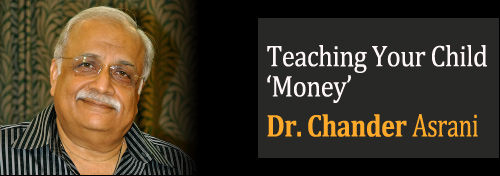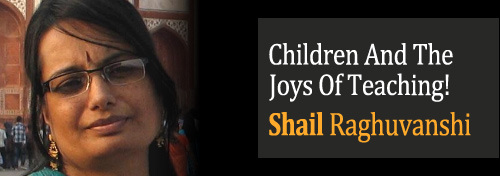Teaching Your Child ‘Money’
My angel N, 2½ year old, had visited me from Chennai. On her return, I handed her a gift in the form of a cheque. She took it, looked on both sides and asked, ‘Yeh kya hai?’ (What is this?). “Money”, I said. She looked again on both the sides and returned it saying, “Yeh money nahin hai!” (This is not money!). I was zapped!
Only when B, her mother told her it is bank money, she accepted it.
I asked B, “How does she know which is Money, which is not? She is all of 2½”. “She sees money, she know the colours; since cheque was blank on one side, maybe she was very sure.”
I asked B (wanting to know how young parents plan), “When will you teach her about Money?”
“Not thought of, but she will keep learning as she has till now.”
I had another topic to ask my ubiquitous database of parents:
‘Did you plan to teach ‘Money’ to your child or Have you thought of how to teach ‘Money’ to your child?’ And I was overwhelmed by the responses I received.
I share a compilation.
Most frequent response was, “No! But, we wish we had. Now our kid thinks money grows on trees!”
I had started with the idea of introducing money to the child but from most responses it emerged that – teaching a child value of money is more important. How and when to do it? – is the million Rupee question!
- As soon as your child learns to count, money should be introduced. At pre-school age, when you are teaching counting, take coins and count, start with a single type of coin and when they start learning, start mixing coins. Using coins is the best way to teach this concept. Also, don’t forget to teach – ‘this is money; never to put in the mouth’. It helps you buy things!
- A young mother, who had planned it well, says – ‘I would keep talking about money; show shock when presented with a big bill at the Super market; discuss how money was involved in choosing a particular product over the other, etc. I did not show that I am teaching about money but the idea that money is important and money should be spent carefully was firmly embedded. My husband and I would discuss major expenditures with K (her son) around; albeit not involving him but ensuring that he was listening. At 5, I took him to the bank and opened an account (we had already opened his account but this was to be ‘his’ account to learn money management) and took him each month to deposit some money. Today at 7 he is proud of his savings and has learnt about value of money and saving’.
- Another mother says – you cannot teach money till they are very comfortable counting up to 10 and can handle minimal addition and subtraction. I keep talking and planning about spending, bargaining, saving with my 4-year-old daughter around.
- Some mothers feel that taking your child for weekly household shopping to the mall is a big help. Kids are asked to search/identify products, pick them up; compare unit prices; made to hand over money to the cashier; allowed to take the change (and as they grow up, make them count) and put it back properly. All these are the activities that help. These mothers refrain from using credit cards with kids around, as the concept of card money may be detrimental if taught too early.
- Some parents inculcated the value of money when the child at 4-5 year started making choices on what to buy. They converted these buying decisions to spending decisions. They encouraged use of common sense while discussing pros and cons of all options before deciding what to buy. Another aspect that the child was taught was, waiting for the right time to spend – “this is expensive, we’ll buy on your birthday or when your savings reach X amount or we’ll add X amount every month to your savings and then you buy”, kind of talk…
- A couple, seeing their kid’s fascination with I-pad, taught him about coins and currency notes of value up to 50, through images (as he could count till 50) and after seeing them few times on-screen, he could identify them in real life.
Ways and means may differ but what is important is, kids should be taught about money and its value – ASAP!
A child, who is spendthrift at 5, can be a great source of stress for parents!
For those interested, here is link of an e-book to teach money and time skills to kids (KG to grade 2) –
http://ebookee.org/The-Complete-Book-of-Time-and-Money-4-Kids_290644.html
Dr Chander Asrani, father to three daughters and grand father to one, is a post-graduate in Family Medicine. He has over 35 years in clinical practice, launched www.growingwell.com in 2000 and since then has been writing on various subjects. Know more about him at about.me/drasrani.

